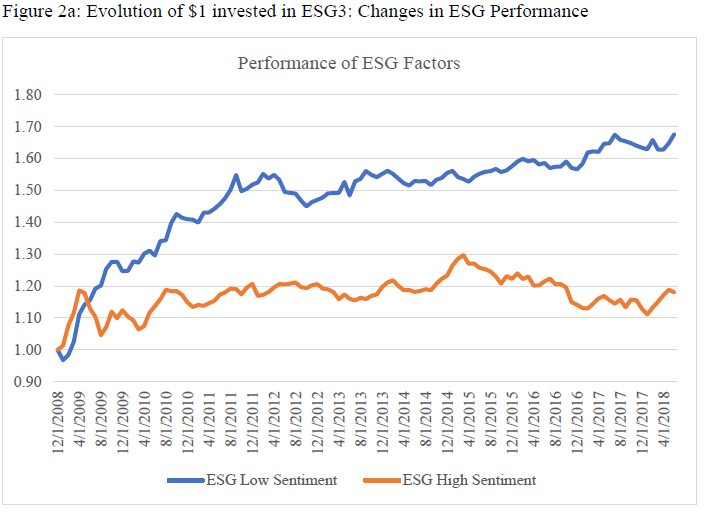Get inspiration in your inbox
with our monthly newsletter.
with our monthly newsletter.
George Serafeim | Harvard Business School - Oct 26 2018
The Price of Corporate Sustainability
George Serafeim, Palladium Positive Impact Summit 2018
A new Harvard study by Palladium thought leader George Serafeim analyses corporate sustainability efforts and the value that investors put on them. This paper has implications for evidence-based decision making inside companies and investment organisations. Read George's takeaways below, and download the paper in full.
Takeaways:
- This is the first paper that combines traditional analyst driven ESG ratings from MSCI with big ESG data from machine learning and artificial intelligence from TruValue Labs. Many thanks to both organizations for making data available for research. The combination yields powerful results.
- Figure 1 shows that the price of corporate sustainability performance has increased over time. This is the estimated premium (if positive) or discount (if negative) that firms with better sustainability performance trade relative to peers after accounting for several factors such as current profitability, size, leverage, past returns and other firm characteristics. This is good news for companies that perform better on material sustainability dimensions (as defined by MSCI) as the market rewards them with a higher multiple.

- This higher multiple is even higher in the presence of positive public sentiment about a company’s sustainability performance, by sophisticated sources (e.g. industry analysts, NGOs, think tanks etc.) as captured by TruValue Labs. In the presence of negative sentiment a firm’s sustainability performance is largely discounted. This has fundamental implications for Chief Sustainability Officers and business leaders in how they work with the broader ecosystem.
- The higher price of corporate sustainability poses a challenge for ESG investors. Do you get a good value for money from your investments? It is not only a matter of the value of corporate sustainability anymore, but it is also a function of the price you are paying for it. Value for price is key.
- The paper shows that combining big data and analyst driven ESG data allows one to identify 'value' opportunities in the ESG space and as a result construct an investment strategy that delivers alpha while investing in companies with greatly superior ESG performance scores.

This article originally appeared on LinkedIn and was republished with permission.
Get inspiration in your inbox
with our monthly newsletter.
with our monthly newsletter.

